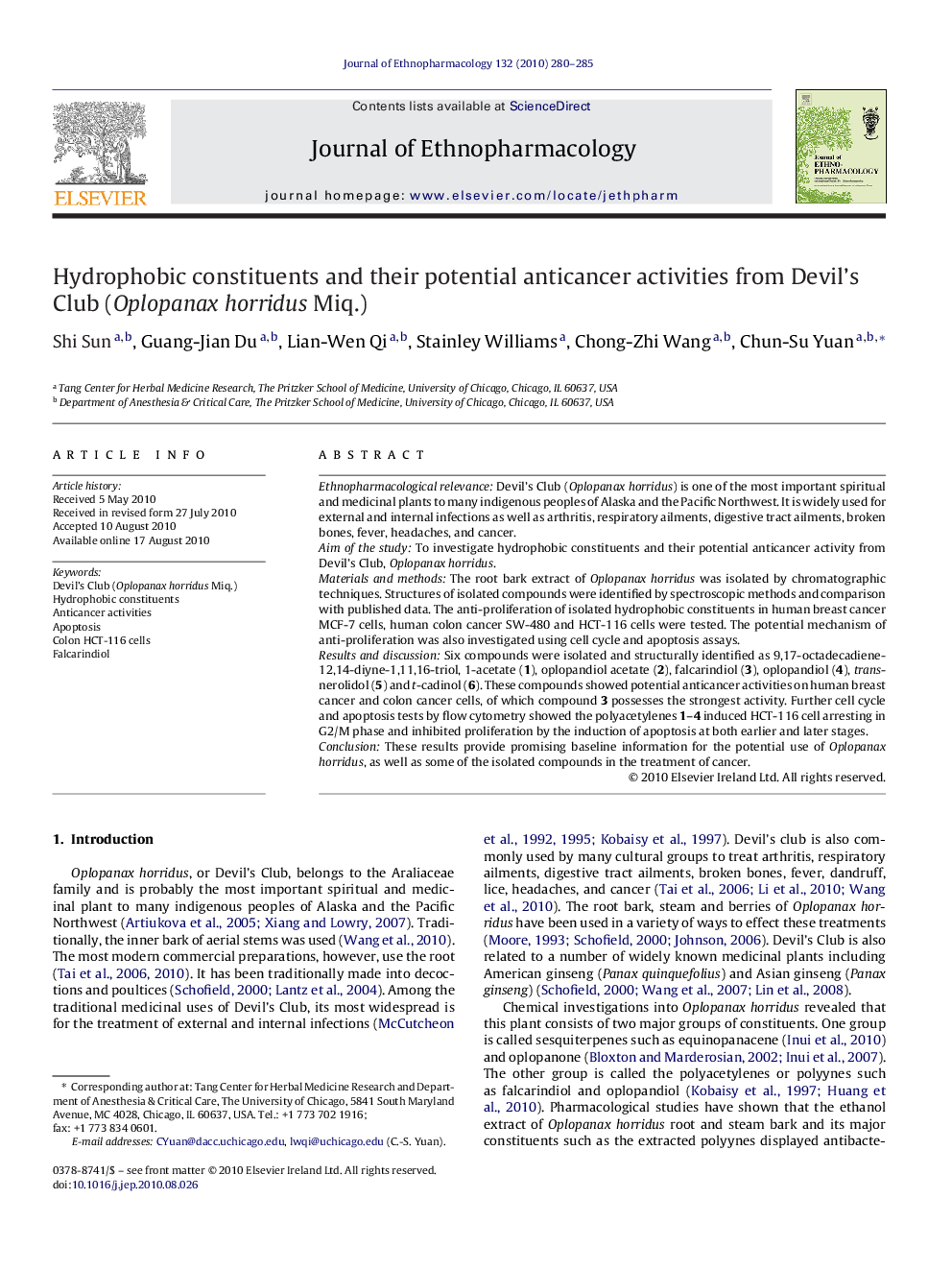| کد مقاله | کد نشریه | سال انتشار | مقاله انگلیسی | نسخه تمام متن |
|---|---|---|---|---|
| 2545678 | 1123990 | 2010 | 6 صفحه PDF | دانلود رایگان |

Ethnopharmacological relevanceDevil's Club (Oplopanax horridus) is one of the most important spiritual and medicinal plants to many indigenous peoples of Alaska and the Pacific Northwest. It is widely used for external and internal infections as well as arthritis, respiratory ailments, digestive tract ailments, broken bones, fever, headaches, and cancer.Aim of the studyTo investigate hydrophobic constituents and their potential anticancer activity from Devil's Club, Oplopanax horridus.Materials and methodsThe root bark extract of Oplopanax horridus was isolated by chromatographic techniques. Structures of isolated compounds were identified by spectroscopic methods and comparison with published data. The anti-proliferation of isolated hydrophobic constituents in human breast cancer MCF-7 cells, human colon cancer SW-480 and HCT-116 cells were tested. The potential mechanism of anti-proliferation was also investigated using cell cycle and apoptosis assays.Results and discussionSix compounds were isolated and structurally identified as 9,17-octadecadiene-12,14-diyne-1,11,16-triol, 1-acetate (1), oplopandiol acetate (2), falcarindiol (3), oplopandiol (4), trans-nerolidol (5) and t-cadinol (6). These compounds showed potential anticancer activities on human breast cancer and colon cancer cells, of which compound 3 possesses the strongest activity. Further cell cycle and apoptosis tests by flow cytometry showed the polyacetylenes 1–4 induced HCT-116 cell arresting in G2/M phase and inhibited proliferation by the induction of apoptosis at both earlier and later stages.ConclusionThese results provide promising baseline information for the potential use of Oplopanax horridus, as well as some of the isolated compounds in the treatment of cancer.
Six compounds were isolated from Devil's Club Oplopanax horridus, and showed potential anticancer activities. The mechanisms involved were cell cycle arrest and induction of apoptosis.Figure optionsDownload as PowerPoint slide
Journal: Journal of Ethnopharmacology - Volume 132, Issue 1, 28 October 2010, Pages 280–285